Results 1,691 to 1,700 of 12094
Thread: Anandtech News
-
03-07-12, 01:20 PM #1691
Anandtech: Apple: Introducing iPhoto for the iPad/iPhone
Apple announced updates to its iWork and iLife suites for the new iPad, supporting the new Retina Display. It also announced the introduction of iPhoto for iOS. Although there's an existing photo management application built into iOS, iPhoto brings multitouch editing to the table. The iOS version of iPhoto supports up to 19MP images for editing. The iPad Retina Display should make for a good canvas to edit/view images on so the fit makes sense.
It's clear that Apple is making a step towards making the iPad more of a productivity device. While I don't know that it's enough for professional photographers, iPhoto makes a lot of sense to bring to the iOS platform. The application is available today for $4.99.
Gallery: Apple: Introducing iPhoto for the iPad/iPhone
More...
-
-
03-07-12, 01:50 PM #1693
Anandtech: Apple TV Next and The New iPad Tech Specs Pages Post - Single Core A5 in A
Finishing off their special iPad and Apple TV announcement, Apple has just set the tech specs pages live for both the iPad and Apple TV, and the only major surprise is inclusion of a single core A5 in the new Apple TV.
Considering the die size (and thus cost) of the A5 SoC, it isn't altogether surprising to see Apple go with an A5 with one Cortex A9 fused off for the new Apple TV. This is likely a die harvesting move, and I wouldn't be surprised to see an iPod Touch show up with a similar single core A9 A5 SoC at some point in the future.As predicted, the iPad next contains Apple's A5X SoC which we suspect is a 32nm A9MP2 and SGX543MP4, up from the A5's SGX543MP2. The rest of the specs on the new iPad page get a modest bump to, including a spec bump on 802.11a/b/g/n and Bluetooth 4.0 likely alongside use of Broadcom's BCM4330 module just like in the iPhone 4S. Battery also is considerably larger, at 42.5 Whr compared to the iPad 2's 25 Whr.
More...
-
03-07-12, 02:00 PM #1694
Anandtech: Apple: 1080p Apple TV uses a Single-Core A5 SoC
Details are scarce, but the new 1080p Apple TV does use a single-core Apple A5 SoC. I'm assuming the video decode engine is identical to what we have in the iPhone 4S today. The chassis design and remote remain identical to the previous 720p model.
Gallery: Apple: 1080p Apple TV uses a Single-Core A5 SoC
More...
-
-
03-07-12, 02:40 PM #1696
Anandtech: Apple Posts iOS 5.1 Final - Build 9B179
A full 1 month and 27 days since iOS 5.1 B3 was posted for Apple Developers to try out, iOS 5.1 final has posted online for download and installation. The final build is 9B179, up from 9B5141a on iOS 5.1B3. Download links are available and live through iTunes and for OTA on devices already running iOS 5.0, or check e-lite for direct links to the Apple-hosted IPSW files based on itunes.com/version.
Among the changes are a boost to the maximum cellular download size for App store applications to 50 MB from 20 MB, new Japanese language support for Siri, a new camera shortcut from the lock screen, improved face detection, improved battery life, and perhaps most ominously an "updated AT&T network indicator" among others. Hopefully the 3G disconnect bug which plagued iOS 5.1 B2 and B3 has been fixed as well. We're downloading the update right now for install and will post back with impressions.
More...
-
03-07-12, 03:20 PM #1697
Anandtech: Micron Announces 2.5" PCIe SSD for Enterprise
Micron has announced the first 2.5" SSD which utilizes PCIe interface instead of the more common SATA interface. The 2.5" form factor allows for easy serviceability because the drives can be placed into the front end of servers. Traditional PCIe cards are harder to service and are not hot-swappable, requiring the server to be powered down. Furthermore, using PCIe instead of SATA eliminates the bandwidth bottleneck that SATA produces (maximum of 6Gb/s versus 32Gb/s for PCIe 2.x x8).
The drive is essentially a 2.5" version of Micron's P320h SSD, which Micron announced in June (see our article here). Both use 34nm SLC NAND and are based on the same in-house controller. According to Micron's specifications, the controller is actually one of the fastest to date - providing read speeds of up to 3GB/s and write speeds of up to 2GB/s (yes, with a big B, i.e. bytes). Random 4KB read performance maxes out at 750K IOPS, while random read tops out at 341K IOPS (700GB version).
However, keep in mind that the controller features 32 channels. 2.5" SSDs typically utilize 16 NAND packages, which means only half of the available channels would be in use with Micron's controller. Micron couldn't provide us with any detailed specifications or performance figures yet as this announcement was for promoting the new interface, not the actual drive, so we don't know how much the performance differs from the FHHL sized PCIe card. The capacities are a bit smaller at 175GB and 350GB and at least random write performance should be slightly lower than what the FHHL card offers, but it's certain that this will be one of the fastest (if not the fastest) 2.5" SSDs.
Micron is currently sampling interested customers and an actual product announcement is going to follow later this year with more specific performance details. No pricing has been revealed, but Micron hinted that the price of the FHHL card would be over $16 per GB, which works out to be $2800 for 175GB and $5600 for 350GB if the 2.5" version is priced similarly.
More...
-
03-07-12, 05:20 PM #1698
Anandtech: Supermicro Launches 100+ Server Solutions Based on the Xeon E5 Family
The Sandy Bridge based Xeon E5-2600 processors were launched by Intel yesterday, and Supermicro wasn't far behind in launching a host of solutions supporting / based on these processors. The new generation X9 Xeon E5 family based platforms offer a number of improved features over previous offerings from Supermicro, including but not limited to:
- Support for upto 768 GB of DDR3-1600 MHz memory in 24 DIMM slots
- SATA 3.0 and SAS 2.0 (6 Gbps) support
- ConnectX FDR/QDR InfiniBand ports
- Dual 10 GbE Ethernet / Quad Ethernet LAN
- PCI-E 3.0
- LSI 2008 (Software RAID) and LSI 2108 (Hardware RAID) controllers
More than 100 product platforms have been updated / newly created by Supermicro for the new Xeon E5 processor family.
Supermicro's X9 solutions can be broadly divided into the following categories:
- Supermicro Servers
- Supermicro Serverboards
- Supermicro SuperBlade
The servers are built around the boards in the second category, and just build upon the existing chassis / PSU combinations. The SuperBlade configurations and some of the serverboards in the X9 generation have only been announced on paper.
The table below summarizes the specifications of Supermicro's single socket LGA2011 serverboards which are currently available.
The table below summarizes the specifications of Supermicro's dual socket LGA2011 serverboards which are currently available.Supermicro X9 Single Socket LGA2011 Serverboards Model Number Form Factor DRAM Chipset PCI-E Configuration LAN Storage USB Misc. Notes X9SRA ATX 8 DIMMs (256 GB) Intel C602 2 x16 PCI-E 3.0, 1 x4 PCI-E 3.0 (in x8), 1 x4 PCI-E 2.0 (in x8), 1 PCI 32-bit Intel i350 Dual GbE 2x SATA3, 4x SATA2, 4x SATA (RAID 0,1,5,10) 14x v2.0 (8 rear + 6 headers), 4x v3.0 (2 rear + 2 headers) X9SRi / X9SRi-F ATX 8 DIMMs (256 GB) Intel C602 1 x16 PCI-E 3.0, 1 x8 PCI-E 3.0 (in x16), 1 x4 PCI-E 2.0 (in x16) Intel i350 Dual GbE 2x SATA3, 4x SATA2, 4x SATA (RAID 0,1,5,10) 9x v2.0 (2 rear + 6 headers + 1 Type-A) IPMI 2.0 and KVM with Dedicated LAN ("F") X9SRE / S9SRE-F ATX 8 DIMMs (256 GB) Intel C602 1 x16 PCI-E 3.0, 1 x8 PCI-E 3.0 (in x16), 1 x4 PCI-E 2.0 (in x16), 3 PCI-X 64-bit Intel i350 Dual GbE ("F") 2x SATA3, 4x SATA2, 4x SATA (RAID 0,1,5,10) 9x v2.0 (2 rear + 6 headers + 1 Type-A) IPMI 2.0 and KVM with Dedicated LAN X9SRG-F Custom (7.71" x 16.64") 8 DIMMs (256 GB) Intel C602 2 x16 PCI-E 3.0, 1 x8 PCI-E 3.0 Intel i350 Dual GbE 2x SATA3, 4x SATA2 (RAID 0,1,5,10), 4x SAS2 (RAID 0,1,10) 6x v2.0 (2 rear + 4 headers) X9SRW-F / X9SRW-3F Custom (8.15" x 13.05") 8 DIMMs (256 GB) Intel C602 ("F"), Intel C606 ("3F") 2 x16 PCI-E 3.0, 1 x8 PCI-E 3.0 Intel i350 Dual GbE 2x SATA3, 4x SATA2 (RAID 0,1,5,10), 4x SATA 8x v2.0 (2 rear + 6 headers) 4x SATA extra ("3F")
If you want to take a look at the systems based on these boards / upcoming boards, head on over to Supermicro's X9 page. It must also be noted that Supermicro supplies a number of integrated solutions for workstations, storage and data centers, and all of these have been updated with support for the new Xeon E5 processor family.Supermicro X9 Dual Socket LGA2011 Serverboards Model Number Form Factor DRAM Chipset PCI-E Configuration LAN Storage USB Misc. Notes X9DAi E-ATX 16 DIMMs (512 GB) Intel C602 3 x16 PCI-E 3.0, 2 x8 PCI-E 3.0, 1 x4 PCI-E 3.0 (in x8) Intel i350 Dual GbE 2x SATA3, 8x SATA2 7x v2.0, 4x v3.0 2x 1394a headers + Realtek ALC889 7.1 HD 8 Channel Audio w/ SPDIF header X9DR3-F / X9DRi-F E-ATX 16 DIMMs (512 GB) Intel C602 ("i"), Intel C606 ("3-F") 3 x16 PCI-E 3.0, 3 x8 PCI-E 3.0 Intel i350 Dual GbE 2x SATA3, 4x SATA2, 4x SATA2 extra ("i"), 8x SAS (RAID 0,1,10) ("3-F") 11x v2.0 (4 rear + 6 headers + 1 Type-A) IPMI 2.0 and KVM with Dedicated LAN X9DR3- LN4F+ / X9DRi- LN4F+ EE-ATX (13.68" x 13") 24 DIMMs (768 GB) Intel C602 ("i"), Intel C606 ("3") 4 x16 PCI-E 3.0, 1 x8 PCI-E 3.0, 1 x4 PCI-E (in x8) Intel i350 Dual GbE 2x SATA3, 4x SATA2, 4x SATA2 extra ("i"), 8x SAS (RAID 0,1,10) ("3") 9x v2.0 (4 rear + 4 headers + 1 Type-A) IPMI 2.0 and KVM with Dedicated LAN X9DRL-3F / X9DRL- iF ATX 8 DIMMs (256 GB) Intel C602 ("i"), Intel C606 ("3") 2 x8 PCI-E 3.0, 1 x8 PCI-E 3.0 (in x16), 1 x4 PCI-E 2.0 (in x8), 1 x1 PCI-E 2.0, 1 PCI Intel 82574L GbE LAN
with Dual GbE Ports2x SATA3, 4x SATA2, 4x SATA2 extra ("i"), 8x SAS (RAID 0,1,10) ("3") 9x v2.0 (4 rear + 4 headers + 1 Type-A) IPMI 2.0 and KVM with Dedicated LAN X9DRT-H F / IBQF / IBFF Custom (6.8" x 16.64") 8 DIMMs (256 GB) Intel C602 1 x24 PCI-E 3.0 and
special x8 connector for SMC add-onIntel i350 Dual GbE 2x SATA3, 5x SATA2 4x v2.0 (2 rear + 2 header) Infiniband QDR (40 Gbps / "QF")
Infiniband FDR (56 Gbps / "FF")
IPMI 2.0 and KVM with Dedicated LANX9DRW-3F / X9DRW-iF E-ATX 16 DIMMs (512 GB) Intel C602 ("i"), Intel C606 ("3") 1 x32 PCI-E 3.0 Intel i350 Dual GbE 2x SATA3, 4x SATA2, 4x SATA2 extra ("i"), 8x SAS (RAID 0,1,10) ("3") 8x v2.0 (4 rear + 4 header) IPMI 2.0 and KVM with Dedicated LAN X9DRG- HF / X9DRG- HTF Custom (7.71" x 16.64") 8 DIMMs (256 GB) Intel C602 4 x16 PCI-E 3.0, 1 x8 PCI-E 3.0 (in x16), 1 x4 PCI-E 2.0 (in x16) Intel i350 Dual GbE ("HF")
Intel X540 Dual 10Gb Base-T LAN ("HTF")2x SATA3, 8x SATA2 6x v2.0 (2 rear + 4 header) IPMI 2.0 and KVM with Dedicated LAN X9DRD-iF E-ATX 8 DIMMs (256 GB) Intel C602 1 x16 PCI-E 3.0, 4 x8 PCI-E 3.0 Intel i350 Dual GbE 2x SATA3, 4x SATA2 7x v2.0 (4 rear + 2 headers + 1 Type-A) IPMI 2.0 and KVM with Dedicated LAN
More...
-
03-07-12, 09:10 PM #1699
Anandtech: The iOS 5.1 update, "4G", AT&T, and the 3G Toggle
When the iPhone 4S first launched, AT&T ominously noted (through a document leaked to The Verge) that it was "working with Apple" to update the 3G indicator to 4G in the status bar. Back then, the extent of just how much AT&T was working with Apple on a regular basis to both build carrier.ipcc bundles and beyond was unknown, but the two have worked together in the past to make UI related changes, going all the way back to the iPhone 3G's signal to bars mapping. In addition, obviously the carrier works with Apple to both validate baseband behavior and respective updates. However, having the carrier dictate changes to UI seemed like new territory.
With respect to the iPhone 4S there was also some confusion about whether the device was HSPA+, and whether that met ITU-R's earlier 4G definitions. All of that we addressed in another post that I'd encourage you to take a look at as a primer for all this. I'm not going to go into that whole debate again since honestly the "4G" thing boils down to a matter of definition, and whether or not you subscribe to ITU-R or not is a matter of principle.
The iPhone 4S launched with a 3G indicator on iOS 5.0, and later was updated to iOS 5.0.1 with the indicator unchanged. Even up through the iOS 5.1 betas, there was no sign that AT&T had worked with Apple to do anything more than slightly bump up the ATT_US.ipcc carrier bundle version. Today with iOS 5.1 going final, things have changed, and the 3G logo of the past now has been updated, and is sure to confuse at least some people about what really has indeed changed.
Now that we're out of the chaos of both an iPad and Apple TV launch, I think it's worth it to examine what the state of things are regarding the indicators and 3G toggles since there's still some confusion abounding. First up is this table, which I've updated with what we've been told or know about the newly announced 4G-enabled iPad. Obviously the cellular basebands and supported HSDPA/HSUPA categories haven't changed for the existing older iDevices, and the point is that this ultimately should govern your expectations for cellular speeds - not indicators. While it's entirely possible for baseband software updates to indeed introduce new features and even bump them up a category or two (like what LG did with the LG Optimus 3D), but none of that has happened here in Apple-land. Carrier marketing aside, nothing has changed regarding the iPhone 4S.
After updating an iPhone 3GS, 4, and 4S with the iOS 5.1 release, and based on what I've learned from other users abroad, I've also checked and built the following chart out which shows the current 3G/4G indicator and toggle matrix.iDevice Cellular Speeds Property iPhone 3G/3GS/iPad 1 3G iPhone 4 / iPad 2 (GSM/UMTS) iPhone 4 / iPad 2 (CDMA) iPhone 4S iPad 4G (3rd Gen.) Baseband Infineon X-Gold 608 Infineon X-Gold 618 Qualcomm MDM6600 Qualcomm MDM6610 Qualcomm MDM9615(?) Max 3GPP Release Feature Release 5 Release 6 Release 7 Release 7 Release 9 HSDPA Category Cat.8 - 7.2 Mbps Cat.8 - 7.2 Mbps N/A Cat.10 - 14.4 Mbps Cat. 24 - 42 Mbps HSUPA Category None - 384 Kbps WCDMA only Cat.6 - 5.76 Mbps N/A Cat.6 - 5.76 Mbps Cat.6 - 5.76 Mbps CDMA2000/EVDO N/A N/A 1x/EVDO Rev.A 1x/EVDO Rev.A 1x/EVDO Rev.A LTE N/A N/A N/A N/A 100/50 UE Cat. 3
Earlier in the day I saw and repeated reports that the iPhone 4 indicator logo showed "4G" on AT&T while charging and updating mine. Those turned out to be false, and I apologize for furthering that information. The iPhone 4 continues to reflect the same icon and toggle as before. The CDMA2000 1x/EVDO devices still don't have a 3G toggle since it still doesn't make much sense (those devices poll 1x from EVDO based on a slotted cycle, and both 1x and EVDO carriers are both 1.25 MHz wide) except unless you just want slower 1xRTT data on a whim. iPhone 4S users not on AT&T however do get a 3G toggle with the new iOS 5.1 update, and still show the 3G icon.iDevice 3G/4G and Toggle after iOS 5.1 Update Property iPhone 3GS iPhone 4 (GSM/UMTS) iPhone 4 (CDMA) iPhone 4S Carrier/Region Everywhere Everywhere Everywhere International
(Not AT&T Sprint or VZW)AT&T Sprint/Verizon WCDMA/EVDO Indicator "3G" "3G" "3G" "3G" "4G" "3G" 3G Toggle Yes Yes No Yes No No
I picked up an unlocked iPhone 4S a while back so I could experiment with using the device on T-Mobile, and when I pop the AT&T SIM out and the T-Mobile SIM in, the 3G toggle re-appears as shown above. This backs up the feedback I've gotten from international users who report also seeing the 3G toggle on iOS 5.1. It should be clear at this point that AT&T's work with Apple went as far as both getting the indicator changed to match its HSPA+ as 4G marketing, and having the 3G toggle selectively remove itself when on AT&T. This lines up with AT&T's recent efforts to get as many devices as possible off of GSM/EDGE and onto the more spectrally efficient WCDMA wherever possible. AT&T has noted pretty recently that it will begin turning off GSM/EDGE carriers on its PCS 1900 MHz holdings as well.
Unlocked iPhone 4S with iOS 5.1 with T-Mobile SIM (left) showing 3G toggle, no 3G toggle with AT&T SIM inserted (right). The toggle is present on iOS 5.1, just not for AT&T subscribers.
It makes sense to differentiate the devices from each other based on the considerable increase in HSDPA category and realizable downstream speed from each hardware iteration. I routinely am able to hit over 7 Mbps (like the test shown above which I just ran) and even above 9 or 10 Mbps from time to time on the iPhone 4S, speeds which are obviously not possible on the 4 or 3GS/3G baseband.
It goes without saying that such differences in realizable speed deserve some differentiation, either in status indicator or elsewhere. At the same time, it seems like a very strange move for Apple to update the indicator on the 4S like this exclusively on AT&T so long after the device launched, and it's this change which has users up in arms online. From what testing I've done so far, the 4G indicator doesn't appear to differentiate HSPA+ 14.4 from HSDPA 7.2 at all on AT&T, it seems as though if you're on HSPA you're given the 4G indicator regardless. The obvious solution I would champion for is treating the end user like an adult and showing detailed information about the current air interface somewhere under about.
On a more positive note, the 3G disconnect bug which previously affected the 4S running the iOS 5.1 betas seems entirely fixed. I haven't encountered that behavior at all since the update.
More...
-
03-08-12, 12:30 AM #1700
Anandtech: The new iPad 4G contains Qualcomm's MDM9x00 Baseband
A while back we speculated that Apple would use Qualcomm's 28nm MDM9615 basband for future iDevices with 4G LTE. The part made logical sense at the time, in part because of its 28nm process and compatibility with all the relevant air interfaces. Now that the restore .ipsw images have been posted and are available for download, I took a peek inside and did a little bit of forensics. It turns out that Apple has gone with Qualcomm's MDM9600, and has given the device codename Maverick (as opposed to Trek for MDM6610). This part still contains UE Category 3 LTE, CDMA2000 1x/EVDO Rev.A (and B), GSM/EDGE, and WCDMA/HSPA+ all the way through DC-HSPA+ 42 Mbps. It's a 45nm 13x13mm part we've seen in numerous other 4G LTE devices thus far.
Gallery: MDM9600 in iPad 3



You can see in the gallery above (or examine yourself by extracting and using your favorite hex editor) that there are numerous 9x00 and 9600 references in the build path throughout all the relevant .mbn files. As a reminder, AMSS.mbn corresponds to Qualcomm's Advanced Mobile Subscriber Software, which is exactly where you'd expect to see such references. The baseband given is MDM9x00 to be specific, though again MDM9200 and MDM9600 differ only in whether CDMA2000 1x/EVDO is enabled. I wager we'll see the AT&T, Verizon Wireless, and the international model using the same baseband but ship with different modules with different sets of power amplifiers.
More...
Thread Information
Users Browsing this Thread
There are currently 19 users browsing this thread. (0 members and 19 guests)












 Quote
Quote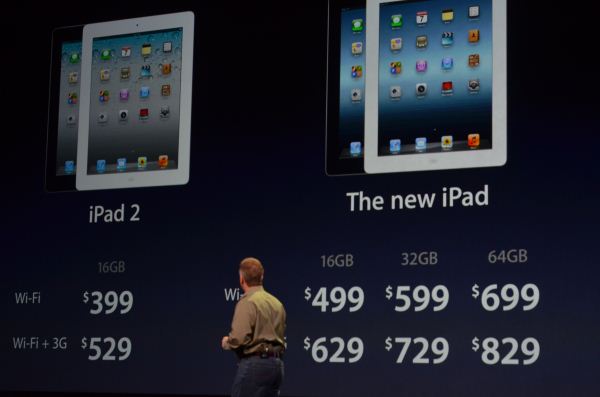







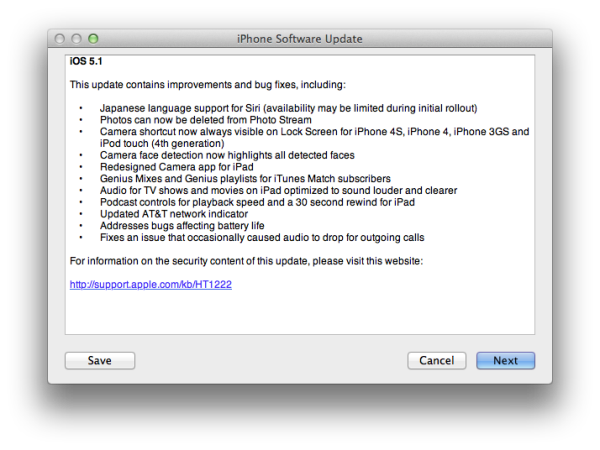


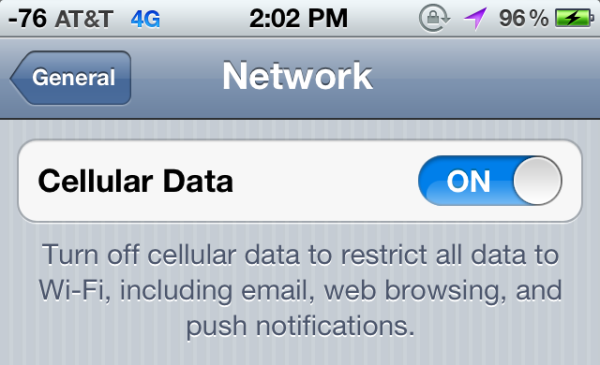
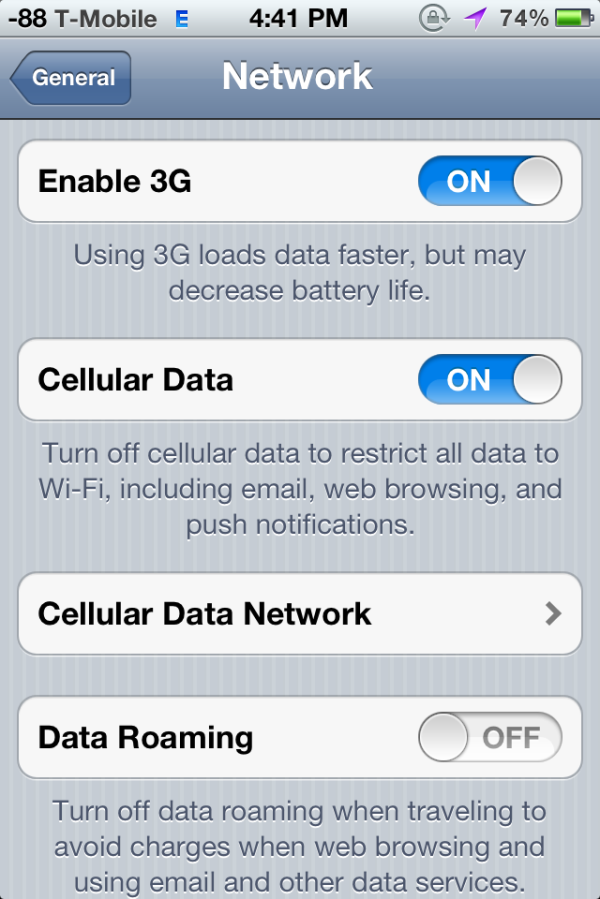
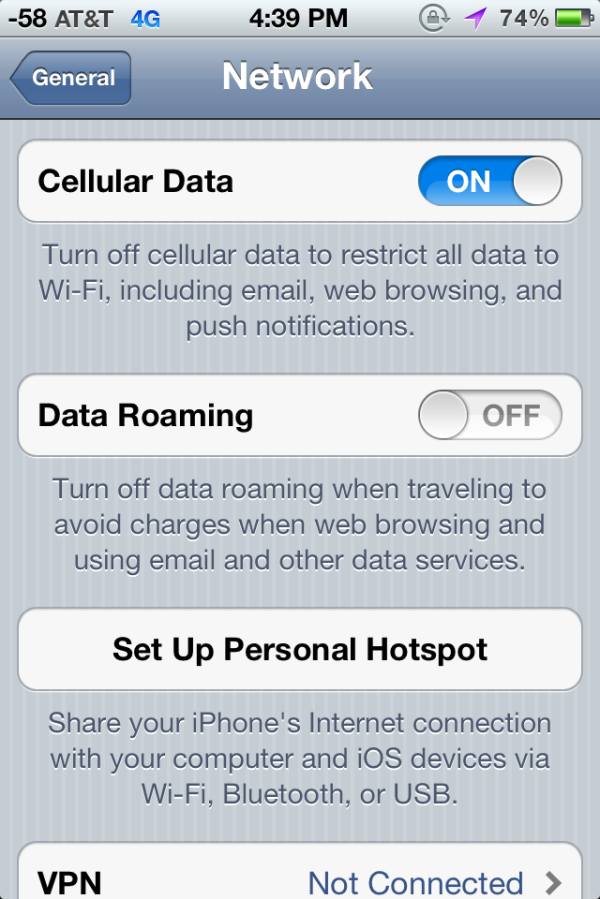
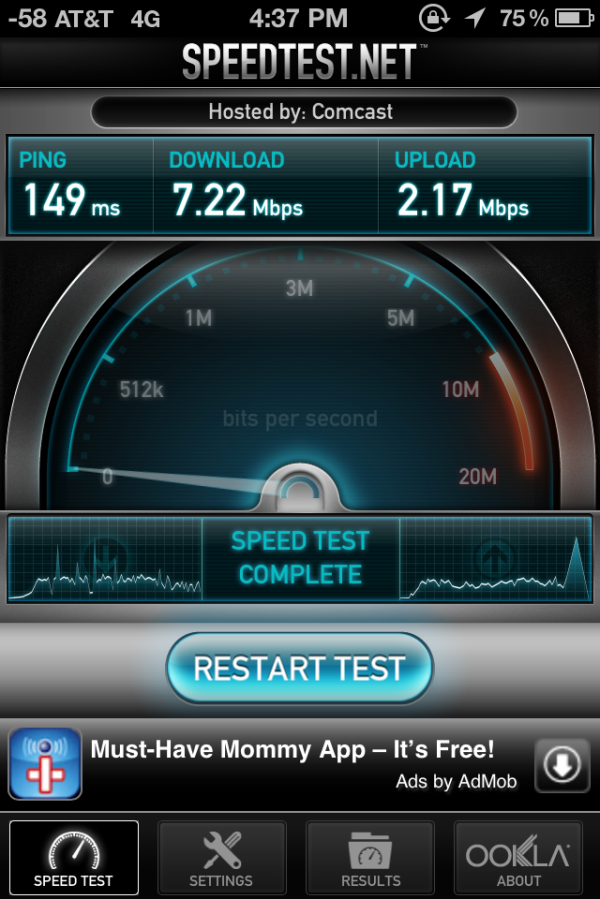
















Bookmarks